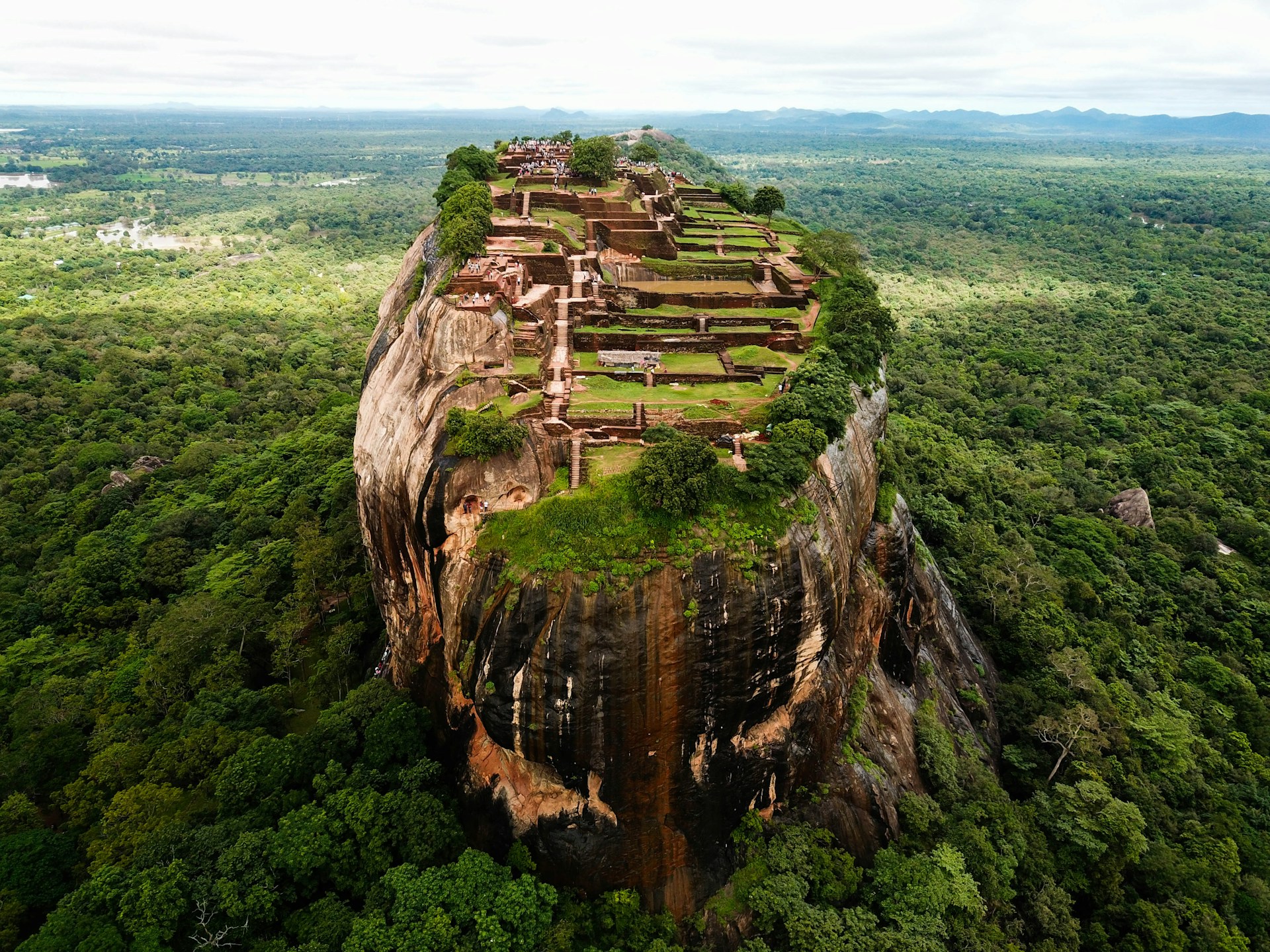
Nestled in the heart of Sri Lanka’s lush central Matale District, near the town of Dambulla, stands the awe-inspiring Sigiriya, also known as Lion Rock. This ancient rock fortress, rising nearly 200 meters above the surrounding plains, is a testament to the ingenuity, artistry, and grandeur of Sri Lanka’s ancient civilization. Sigiriya is not merely a rock but a remarkable historical and archaeological treasure that continues to captivate visitors from around the globe.
A Fortress in the Sky
The story of Sigiriya dates back to the 5th century AD, during the reign of King Kasyapa (477 – 495 AD). Driven by the desire to establish an impregnable stronghold, Kasyapa chose the formidable rock of Sigiriya as his royal palace and fortress. The site was strategically selected for its natural defenses, panoramic views, and the sheer difficulty of access, making it an ideal location for the king’s stronghold.
The name Sigiriya is derived from “Sinha-giri,” meaning Lion Rock, a reference to the enormous lion statue that once stood at the entrance to the palace. While only the lion’s massive paws remain today, they still evoke a sense of the grandeur and power that once defined this magnificent fortress.
Architectural Marvels
Sigiriya’s architectural brilliance is evident from the moment one begins the ascent. The climb to the summit involves navigating a series of well-preserved stairways, terraces, and galleries carved into the rock face. As visitors make their way up, they encounter a series of fascinating features that highlight the site’s historical and artistic significance.
One of the most iconic aspects of Sigiriya is the Mirror Wall. Originally, this wall was so highly polished that the king could see his reflection as he walked alongside it. Over the centuries, the Mirror Wall became a canvas for graffiti, with visitors inscribing their thoughts and verses, some dating as far back as the 8th century. These inscriptions provide a unique glimpse into the thoughts and experiences of ancient travelers.
Another highlight is the collection of frescoes adorning a sheltered gallery halfway up the rock. These vibrant paintings depict celestial maidens, known as “Apsaras,” and are celebrated for their exquisite beauty and detail. The Sigiriya frescoes are considered among the finest examples of ancient Sri Lankan art and are a testament to the artistic sophistication of the time.
The Gardens of Sigiriya
At the base of the rock lies one of the oldest landscaped gardens in the world. The gardens of Sigiriya are a marvel of ancient engineering and design, encompassing a sophisticated network of water gardens, boulder gardens, and terraced gardens.
The water gardens are particularly impressive, featuring a series of symmetrical pools, fountains, and waterways that were ingeniously designed to harness the natural flow of water. Even today, after centuries of natural wear and tear, the hydraulic systems of these gardens continue to function, a testament to the advanced engineering skills of the ancient builders.
The boulder gardens are a labyrinthine arrangement of massive rock formations, connected by winding pathways and staircases. These gardens were designed not only for aesthetic pleasure but also as a means of defense, creating a complex and challenging terrain for any would-be attackers.
A Legacy Preserved
After the death of King Kasyapa, Sigiriya’s role as a royal palace and fortress diminished, and it was eventually transformed into a Buddhist monastery, which remained active until the 14th century. Over the centuries, the site fell into disuse and was largely forgotten until its rediscovery by British archaeologists in the 19th century.
Today, Sigiriya is recognized as a UNESCO World Heritage Site, a designation that underscores its cultural, historical, and archaeological significance. Efforts to preserve and restore this ancient marvel are ongoing, ensuring that future generations can continue to marvel at its splendor.
Conclusion
Sigiriya is more than just a rock; it is a symbol of Sri Lanka’s rich cultural heritage and a testament to the ingenuity and vision of its ancient inhabitants. From its breathtaking frescoes and ingenious water gardens to its imposing Lion’s Gate and panoramic views, Sigiriya offers a journey through time, inviting visitors to explore the mysteries and marvels of an ancient civilization. As one of Sri Lanka’s most treasured landmarks, Sigiriya stands as a monument to human creativity, resilience, and the enduring allure of history.





